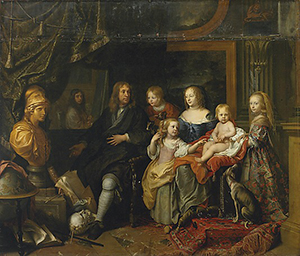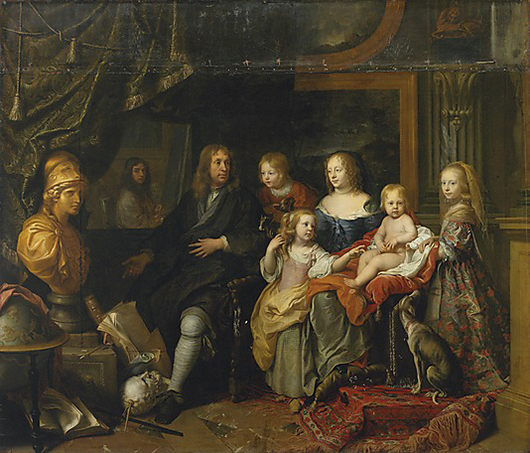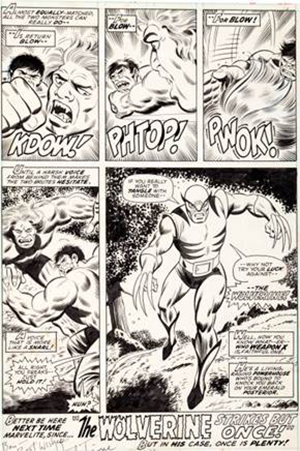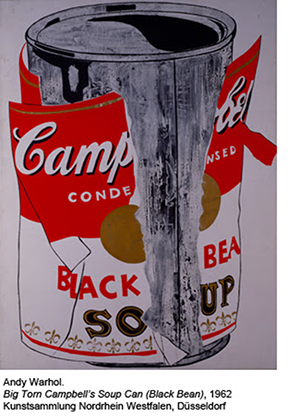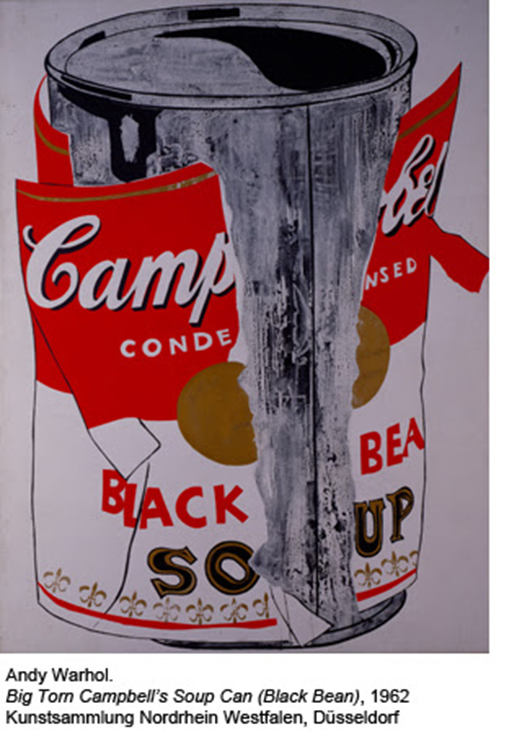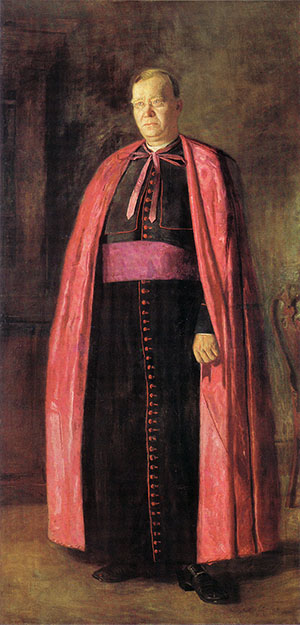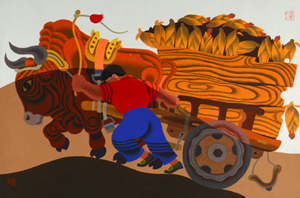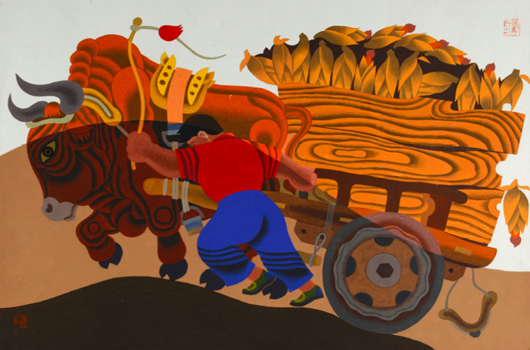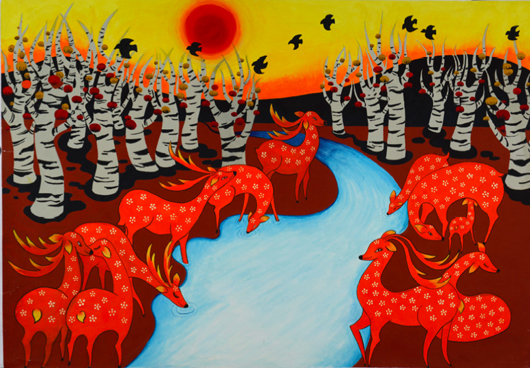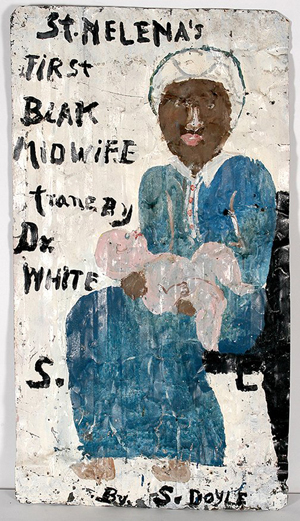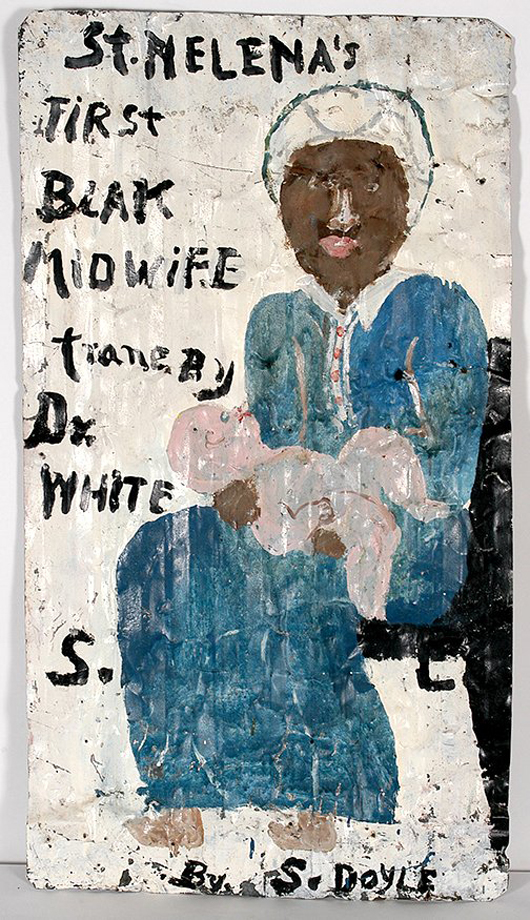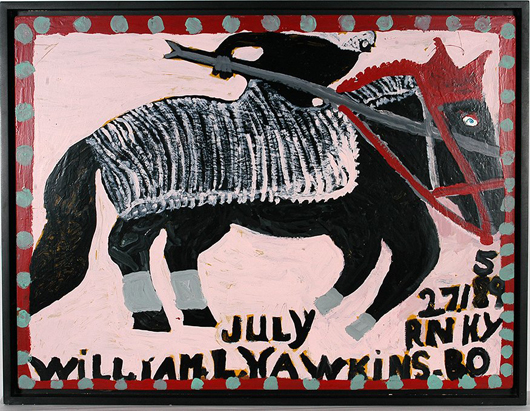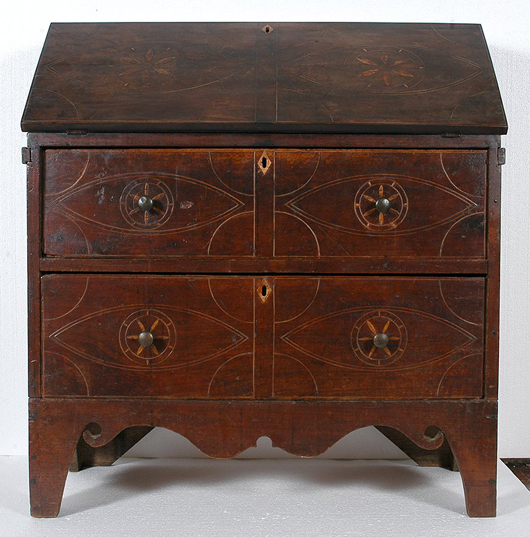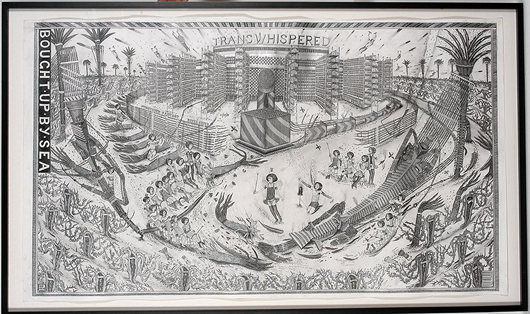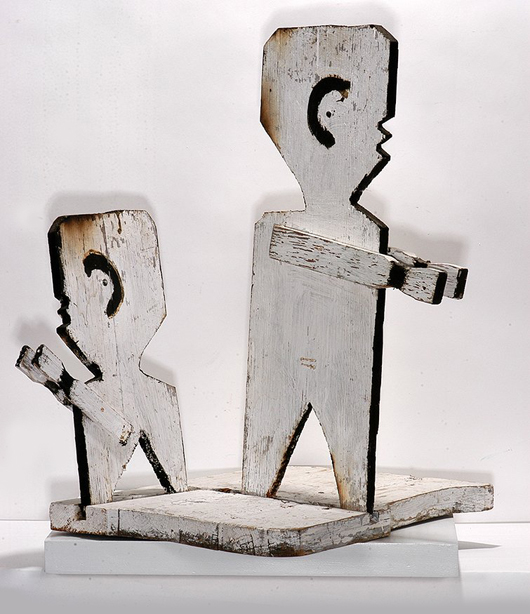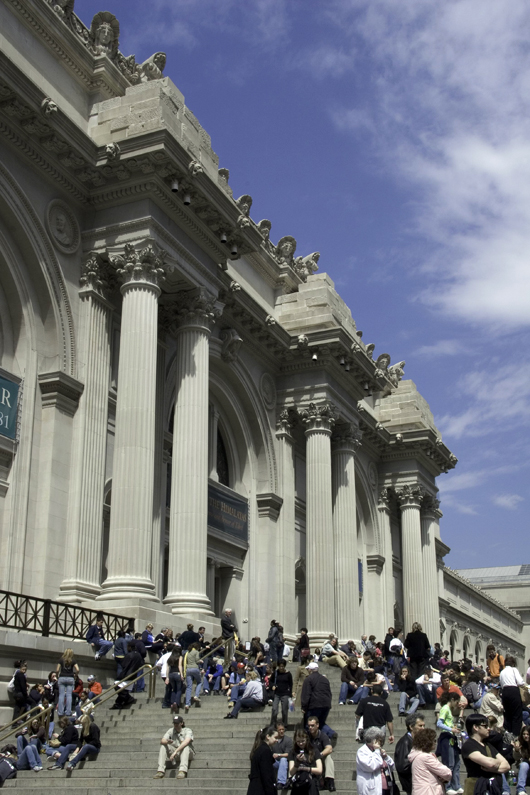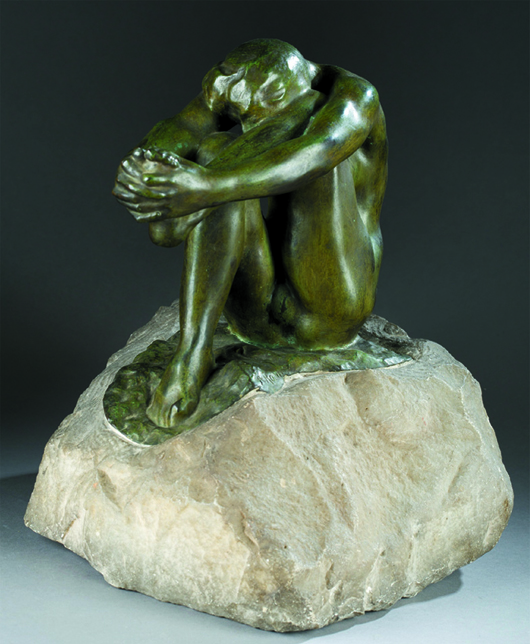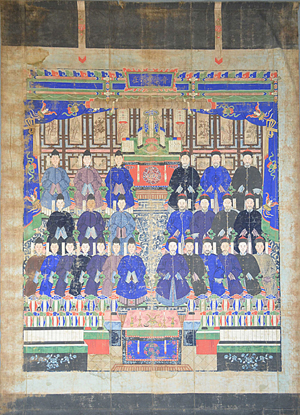
Large and rare Chinese ancestor portrait on canvas, stating: ‘the ancestors appearance is still in our mind’. Estimate: £1,500-£2,500. Ewbank’s image. LONDON – A fascinating collection brought home by their British owner after a period spent working in Singapore highlights a sale of Asian Art at Ewbank’s on Thursday, May 29.
LiveAucitoneers.com will provide Internet live bidding. The auction is composed of over 400 lots.
The collection consisting of more than 70 lots was acquired by its owner, mostly from one of Singapore’s leading dealers in Oriental art and antiques, House of Huanghuali, over a period of seven or eight years while traveling around Asia on business.
Other pieces were purchased in such places as China, Tibet and Vietnam, but a spring cleaning has resulted in them being offered at Ewbank’s.
Leading the collection is a fine and rare Chinese Tang dynasty Sancai figure of a Lokapala wearing an elaborate headdress. In Hindu mythology, Lokapala is a deity who protects the four compass directions. Depicted standing on rocks and trampling a demon, the nedarly 3-foot-tall figure dates from circa A.D. 618-907 and is estimated at £5,000-£8,000. Sancai is an ancient type of Chinese pottery. The name translates literally to “three colors.”
A Chinese famille verte (green family of colors) baluster vase having a waisted neck and painted with two panels of an official with attendants, on a flower and butterfly ground, dates from the Kangxi period (1662-1722) and is estimated at £2,000-£3,000.
The House of Huanghuali takes its name from the indigenous wood of the same name, also known as the “yellow flowering pear,” a type of rosewood classified as Dalbergia odorifera. It was particularly prized in furniture of the Ming dynasty (1368-1644) and early years of the Qing dynasty (1644-1912). It is appreciated for its color, scent and distinctive grain. Its hardness allowed craftsmen to create elegant, slender yet strong pieces.
The collection includes a carved huanghuali chair with a reclining back and carved with a Shou character for longevity, a pair of plant stands and a horseshoe back two-seater sofa, each estimated at £1,000-£1,500.
Two large and rare 18th century portraits on canvas, which are illustrative of the respect and devotion the Chinese place in their ancestors, are featured in the collection. One depicts the male family to the right, the female line to the left; each ancestor is named in a rectangular cartouche. A four-character gilt mark in a blue cartouche at the top of the portrait translates as: “The ancestors’ appearance is still in our mind.” It measures more than 8 feet high and is estimated at £1,500-£2,500, as is a second, even larger ancestor portrait of the female side of a family, the cartouche reading: “Three generations of female ancestors.” It stands 9 feet tall. A 19th century ancestor painting depicting four figures, each with their birth and death dates ranging from Kangxi to Daoguang dynasty (1821-1850), is estimated at £500-£800.
The sale also includes a significant number of late 18th and early 19th century Asian textiles. One of the most important is also from the Singapore collection. The Chinese yellow and gold silk tapestry weave robe is decorated with the symbolically important eight dragons picked out in gold thread set in a representation of the universe in the brocaded fabric. The contrasting hoof form cuffs and collar are also finely embroidered with dragons and further emblems. The robe is estimated at £1,000-£1,500.
The remainder of the textiles are from a collection formerly kept at Hampton Court Palace. The top item is a large 19th century Japanese embroidered wall hanging, depicting a woodland landscape with stream and houses worked in silk long stitch within an applied dragon-patterned fabric border. It measures 80 by 56 inches and is estimated at £400-£600.
The auctioneer dispersed the European textiles in this collection in a previous sale, but reserved some pieces for the more relevant Asian auction. They include wall hangings and embroidered panels and tribal and other garments, notably a Chinese silk wedding jacket extensively embroidered in silver and gold and silk thread. It dates from the first quarter of the 20th century and is estimated at £150-£250.
The Asian sale catalog is now closed but unlike most other auctioneers, Ewbank’s operate a late entries system. All lots, including late entries, are illustrated on the Internet and live bidding is available.
For further information or to make an appointment to see a valuer, please contact the auctioneer on 01483 223101 or antiques@ewbankauctions.co.uk.
ADDITIONAL LOTS OF NOTE
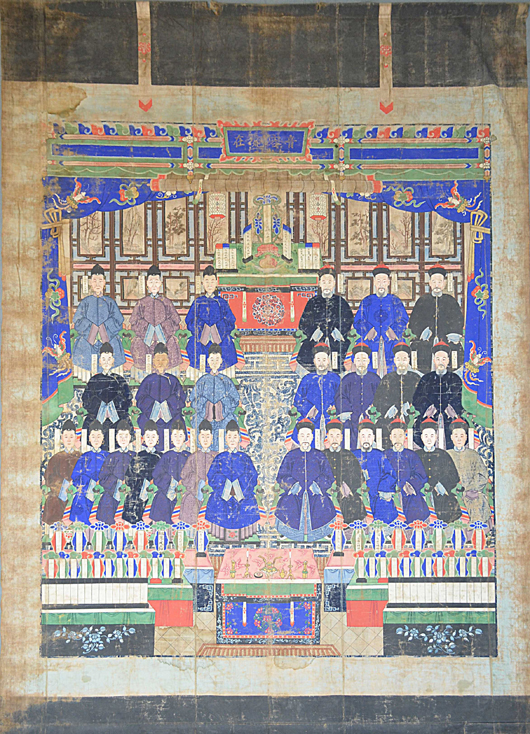
Large and rare Chinese ancestor portrait on canvas, stating: ‘the ancestors appearance is still in our mind’. Estimate: £1,500-£2,500. Ewbank’s image. 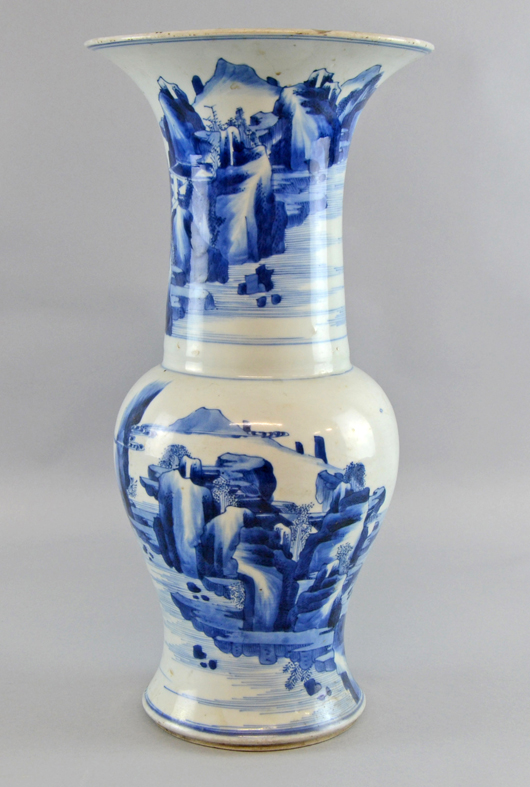
Chinese blue and white Yen Yen vase painted with mountainous landscapes, Kangxi, 1662-1722. Estimate: £3,000-£5,000. Ewbank’s image. 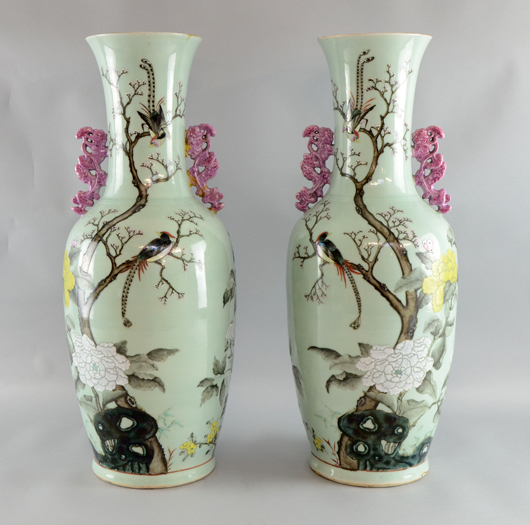
Pair of Chinese famille rose vases with dragon side handles, decorated with exotic birds amid flowering branches. Estimate: £1,500-£2,500. Ewbank’s image. 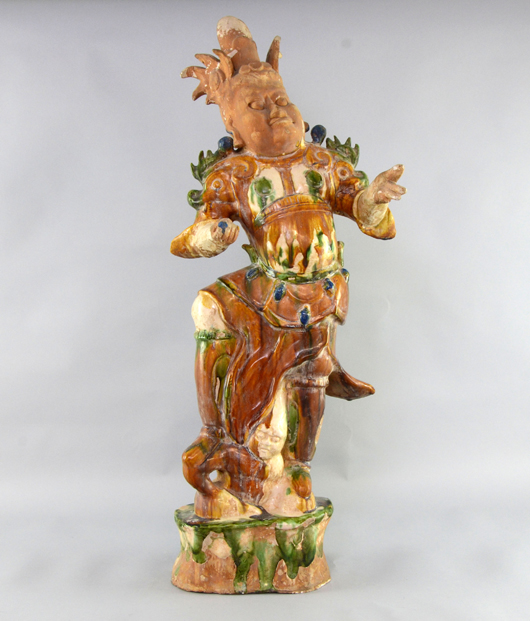
Chinese Tang dynasty Sancai figure of a Lokapala trampling a demon, A.D. 618-907. Estimate: £5,000-£8,000. Ewbank’s image. 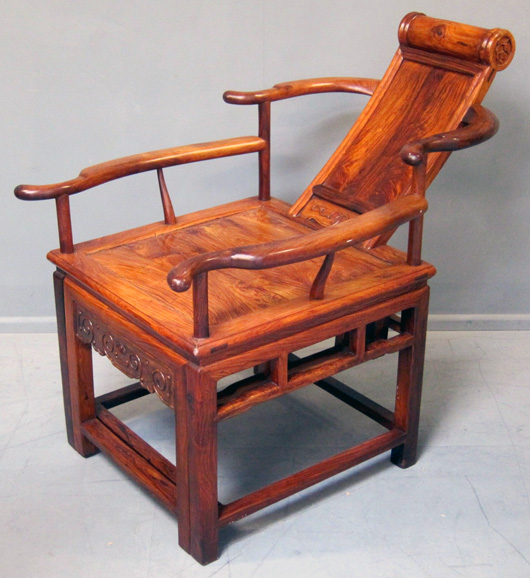
Twentieth 20th Chinese carved huanghuali chair with reclining back, and carved with a Shou character. Estimate: £1,000-£1,500. Ewbank’s image. 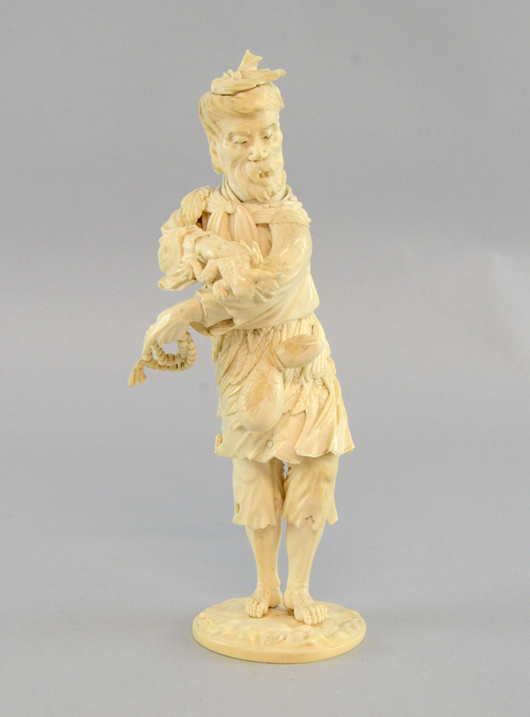
Nineteenth century Japanese carved Ivory figure of Gama Sennin, signed on base with character marks. Estimate: £1,000-£1,500. Ewbank’s image. 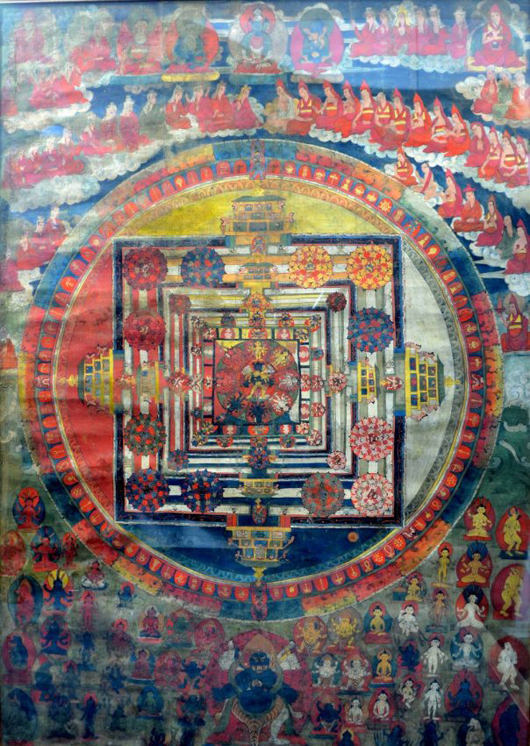
Tibetan mandala with a central tantric figure surrounded by bodisatvas, buddhist monks and tantric figures, 17th-18th century. Estimate: £2,500-£3,500. Ewbank’s image. 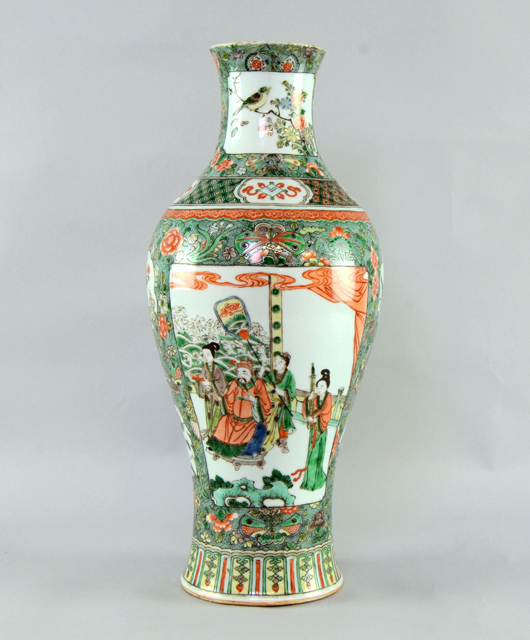
Chinese famille verte baluster vase, with painted with two panels of an official with attendants. Kangxi period. Estimate: £2,000-£3,000. Ewbank’s image.



